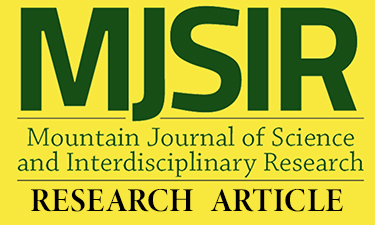Effects of Forage Species and Preparations on the Growth and Feeding Performance of Sheep
Main Article Content
Abstract
Sheep production is very minimal in the Philippines amidst its better economic performance than goat. Lack of researches on this livestock is seen as one factor affecting its lack of acceptance by local livestock raisers. Also, available feed resources and efficient utilization by sheep is constraint in the country despite the abundance of forage. Here, we investigate the effect of forage species, namely napier grass (Pennisetum purpureum) and star grass (Cynodon dactylon), and the type of preparation, namely soilage and silage, on the efficient utilization of forage and its effect on the growth performance of sheep. Forage species did not significantly affect the gain in weight and feed conversion ratio of sheep but acted differently on the feed intake of sheep wherein napier grass was 50% greater than star grass. On the other hand, preparations of forage played significant role on the feed conversion ratio of sheep as silage resulted to an increased weight gain and augmented efficiency in converting feed into weight gain. Though interaction of species and preparations of forage did not show significant results, napier grass silage showed the highest weight gain and the best feed conversion ratio. The results suggest that preference of sheep for unpalatable forage could be encourage through inclusion (mixing) of napier grass in the diet. Similarly, silage could be added (mixed) with other feed preparations (soilage and hay) to encourage high weight gain and better feed conversion ratio.
Article Details
References
Heuzé, V., Tran, G., Salgado, P., & Lebas, F. (2015). Giant star grass (Cynodon plectostachyus). Feedipedia, a programme by INRA, CIRAD, AFZ and FAO. Retrieved from https://www.feedi pedia.org/node/468
Heuzé V., Tran, G., Giger-Reverdin, S., & Lebas, F. (2016). Elephant grass (Pennisetum purpureum). Feedipedia, a programme by INRA, CIRAD, AFZ and FAO. Retrieved from http://www.feedipedia. org/node/395
Kieser, L. (2019). Feeding Dairy Goats. Retrieved from http://www.extension.umn.edu/agricul ture/dairy/feed-and-utrition/feeding-dairygoats/.
Laffan, J., & Neeson, R. (2016). Book. Organic Farming: Livestock: 9781742561882. NSW Agriculture. Retrieved from https://books.google. com.ph/books?id=MTfCCwAAQBAJ.
Leeuwen, J.V., Mellish, K., & Kaniaru, A. (2005). Internal Parasite (worms) Control in Cattle. Retrieved from http://www.farmershelping farmers.ca/wp-content/upload/factsheets/ Fact%20sheet%20Internal%20Parasites.pdf.
Mcdonald, P., Edwards, R.A., Greenhalgh, J.F.D., Morgan, C.A., Sinclair, L.A., & Wilkinson, R.G. (2010). Animal Nutrition. Seventh edition.
Philippine Statistics Authority. (2019). Goat Situation Report, April-June 2019. https://psa. gov.ph/livestock-poultry-iprs/goat/inventory.
Rasby, R., & Martin, J. (2014). Understanding feed analysis. University of Nebraska.
Sormunen-Cristian, R., & Jauhiainen, L. (2001). Comparison of hay and silage for pregnant and lactating Finnish Landrace ewes. Small Ruminant Research, 39(1), 47–57. https://doi.org/10.1016/ S0921-4488(00)00167-X
Statistica. (2019). Sheep production in the Philippines from 2005 to 2017 (in 1,000 heads). https://www.statista.com/statistics/661324/ philippines-sheep-production/.
Tufan, T., Arslan, C., Onk, K., Sari, M. & Tilki, M. (2016). Effects of feeding by hay, grass silage and corn silage on growth performance, rumen fluid and blod serum parameters in beef cattle. Rev. Med. Vet 167, 3-4, 99-105
Van Saun, R.J. (2006). Determining forage quality: Understanding feed analysis. Lamalink.com August, 3(8), 18-19.

